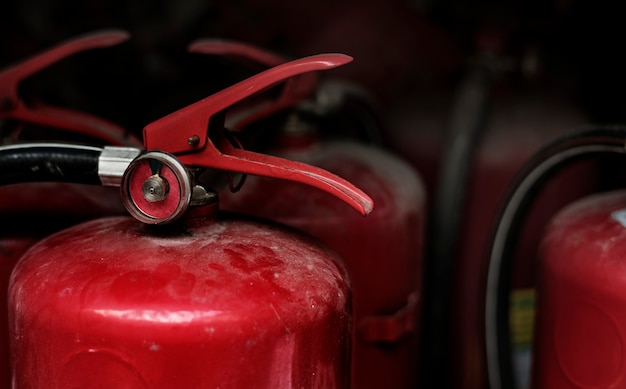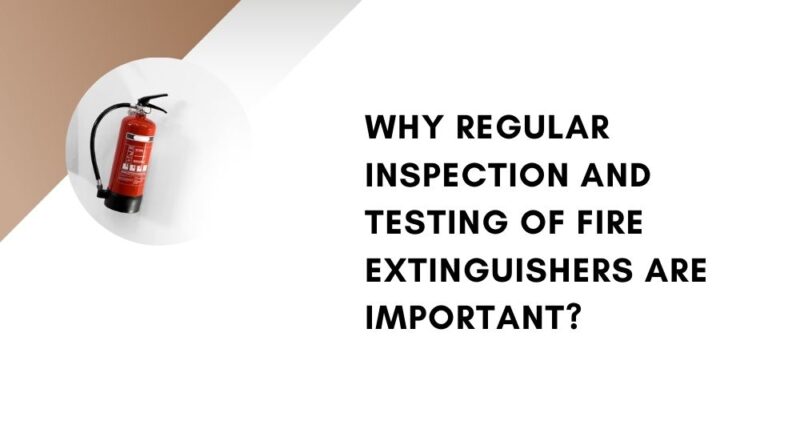Why Regular Inspection and Testing of Fire Extinguishers Are Important?
Fire extinguishers are vital safety tools in any setting, whether it’s at home, in the workplace, or in public areas. They are often the first line of defense in the event of a fire, providing a means to control or extinguish small fires before they escalate into larger, potentially life-threatening situations. Regular inspection and testing of fire extinguishers are not just recommended practices; they are critical actions that ensure these devices function correctly when needed. This blog will explain why regular maintenance of fire extinguishers is so important and how it can save lives.
Understanding the Need for Fire Extinguisher Maintenance
The Role of Fire Extinguishers in Safety
Fire extinguishers play a crucial role in fire safety. They help to keep small fires from growing and give people a chance to escape from dangerous situations. Because of their importance, it’s vital that they work when they are needed the most.
What Happens Without Regular Checks
Without regular maintenance, you might not know if a fire extinguisher is working properly. An extinguisher that fails to work during a fire is not just useless; it can be dangerous, giving a false sense of security that can delay other lifesaving actions.
How Often Should Fire Extinguishers Be Inspected?
Basic Monthly Checks
- Visual Inspections: Every month, fire extinguishers should be checked visually. Look for signs of damage, corrosion, leakage, or a missing safety pin. Make sure the pressure gauge shows the correct pressure level.
- Accessibility: Ensure that the extinguisher is in its correct location and is easily accessible, not blocked by any obstacles.
Annual Professional Inspections
- Expert Assessment: Once a year, a trained professional should perform a detailed inspection and maintenance. They check parts like hoses, seals, and o-rings, which can wear out over time.
- Documentation: Keep records of these inspections. This is not only good practice but also a regulatory requirement in many places.
What Does Testing Involve?
Types of Tests
- Hydrostatic Testing: This test is done to check the integrity of the fire extinguisher cylinder. It helps to ensure that the cylinder can safely hold its operating pressure. It’s usually required every 5 to 12 years, depending on the type of extinguisher.
- Operational Testing: During an annual inspection, technicians might perform a test discharge to ensure the extinguisher works correctly and then recharge it.
Benefits of Regular Inspection and Testing

Ensures Effectiveness
Regularly inspecting and testing fire extinguishers ensure that they will work effectively when needed. This reliability can be the difference between a minor incident and a major disaster.
Complies with Legal Requirements
Most regions have strict regulations requiring the regular inspection and maintenance of fire extinguishers. Keeping up with these ensures compliance with the law and can help avoid potential fines.
Increases Safety Awareness
The regular inspection process increases safety awareness among employees or family members. It reminds people of the importance of fire safety and encourages a culture of safety and preparedness.
Extends Lifespan
Regular maintenance can significantly extend the lifespan of fire extinguishers, making it a cost-effective practice. Well-maintained extinguishers can remain functional for many years, providing good value for the investment.
Tips for Maintaining Your Fire Extinguisher
Train People in Proper Use
Training people on how to use fire extinguishers correctly is as important as maintaining them. Incorrect use can lead to accidents or make a fire worse.
Monitor for Recalls
Keep an eye on product recalls. Sometimes, manufacturers recall certain models if a defect is discovered. Staying informed can help you take quick action to replace or repair a faulty extinguisher.
Place Extinguishers Strategically
Place extinguishers in locations where they can be reached quickly during an emergency. Kitchen, garage, and heating units are common sites where fires can start.
Conclusion
Regular inspection and testing of fire extinguishers are critical to ensuring these devices are ready to function effectively in emergencies. This practice not only complies with legal requirements but also significantly enhances safety in homes, workplaces, and public spaces. By maintaining fire extinguishers, training individuals to use them properly, and keeping them easily accessible, you can ensure that your environment is prepared to handle a fire emergency effectively. Remember, a well-maintained fire extinguisher isn’t just equipment—it’s a lifesaver.
Note:- To read more articles visit on nichenest.




